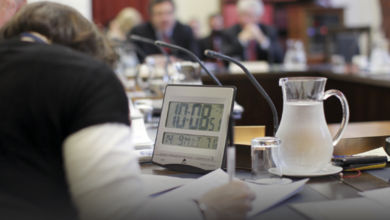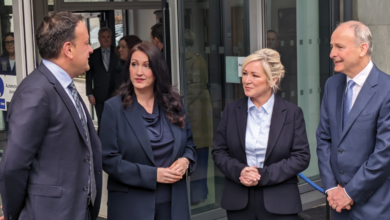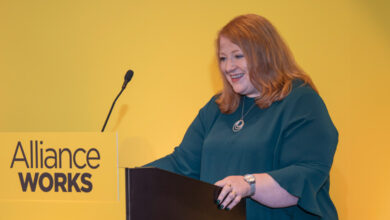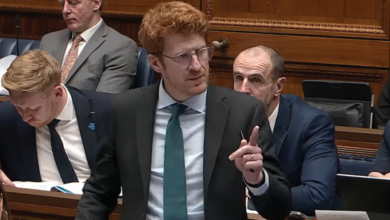Overseas aid: from reaction to resilience
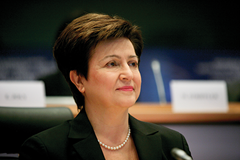 EU Humanitarian Aid Commissioner Kristalina Georgieva recently visited Northern Ireland. Here, she explains how the focus of foreign aid is moving to crisis prevention: a shift that will save more lives and improve livelihoods.
EU Humanitarian Aid Commissioner Kristalina Georgieva recently visited Northern Ireland. Here, she explains how the focus of foreign aid is moving to crisis prevention: a shift that will save more lives and improve livelihoods.
Droughts and crop failures which sparked a hunger crisis in the Horn and Sahel regions of Africa have caused countless deaths recent years. Elsewhere in the world, severe droughts, floods and other dramatic events hammered vulnerable people.
But there are visible differences in the capacity of various countries to react to dramatic changes and the ability of people to cope with unexpected stress and shocks. What we are talking about is resilience and how to build it.
We have the means to prepare the most vulnerable communities for drought, floods and other cyclical crises via data analysis, pattern recognition, risk assessment, smart investments and community-based activities. The first examples of resilience-building have shown promise. In parts of the Horn of Africa and in the Sahel, for instance, European-funded projects have eased the worst effects of drought in some areas, thus helping thousands of people to avoid hunger.
Fostering resilience makes sense financially. Every euro invested in disaster preparedness saves between four and seven euros on disaster response. Resilience is the right thing to do if we in the humanitarian and development community are serious about saving lives and making lives worth living.
No wonder, then, that the global humanitarian and development community is actively looking for ways to integrate resilience into their activities. No wonder either that the European Union, as a global leader in humanitarian and development aid, is also leading the way in promoting resilience. We have committed ourselves to build resilience measures into our humanitarian and development projects and to link our activities more closely together for a smooth transition between disaster relief, rehabilitation and development.
We recognise the world has changed. There are more frequent and more severe shocks for communities to survive. So our approach has to change as well. We aim to manage crises better by helping address their root causes rather than struggling with their consequences. In this respect, food insecurity is an area with great potential for improvement. Its causes are often complex, including climate change, weak productivity, price volatility, growing populations and limited access to markets.
They are also hard to overcome but overcome them we must, if we are to solve the global challenge of hunger, which affects more than 800 million people today. Building resilience is cheaper, more efficient and more sustainable than dealing with the consequences of yet another crisis.
The good news is that we are not starting from scratch: we already have encouraging results in resilience-building in Africa where we have launched the SHARE Initiative (Horn of Africa) and the AGIR partnership (Sahel), linking humanitarian and development resources to boost recovery from the recent droughts and raise the capacity of the most vulnerable communities to survive and bounce back from future droughts.
This is a substantial shift in mentality and practice: from distributing aid to drought-affected people in order to survive until the next drought to investing in the long run: building irrigation systems, promoting more resistant crops, helping pastoralists manage their livestock. The EU invested €3 million in HarvestPlus, for example, which develops more nutritious and resilient seeds for poor farmers in Africa.
These types of successful projects are not yet at a scale as large as is needed but they show the genuine potential of resilience and they are the basis of more to come. SHARE and AGIR focus on food security, but we plan to promote also in other regions and for other types of vulnerability: regions threatened by floods, cyclones, earthquakes and tsunamis, for instance. To achieve positive results we will focus on three key components: risk assessment, prevention and enhanced response.
We can only tackle a problem if we understand it. So we can only help boost resilience if we understand the risks and channel this knowledge towards appropriate responses.
Forewarned is forearmed. Consider, for instance, Nepal where floods hit in 2010. Thanks to early-warning systems working through radio and mobile phones, the communities living in the danger zones near the River Rapt were evacuated before the water reached their villages. Substantial loss of life and damage to property was avoided.
Resilience can only grow and deliver on its promise if it becomes a priority for all, not just for donors such as the European Union who need to make aid more flexible and better targeted but also for governments of the countries in high disaster vulnerability, for the private sector which can contribute important know-how on insurance and risk assessment, and for civil society.
We in the European Commission are giving a clear signal that we are willing to re-examine our priorities as a donor and set a bold new goal: resilience. We will work together within the humanitarian and development communities, with policy-makers and all other partners, to find adequate and lasting solutions to hunger and disaster exposure which threaten more people than ever. Most of these people cannot help themselves. We are committed to giving them a genuine chance to overcome their vulnerabilities, to bounce back and grow more resilient. This is a genuine chance to succeed.
Profile
Kristalina Georgieva, from Bulgaria, is the European Union’s Commissioner for International Cooperation, Humanitarian Aid and Crisis Response. She was appointed in 2009 and was previously a Vice-President of the World Bank, an environmental economist and an academic in development studies. She is married with one son, and is a member of the centre-right European People’s Party.

